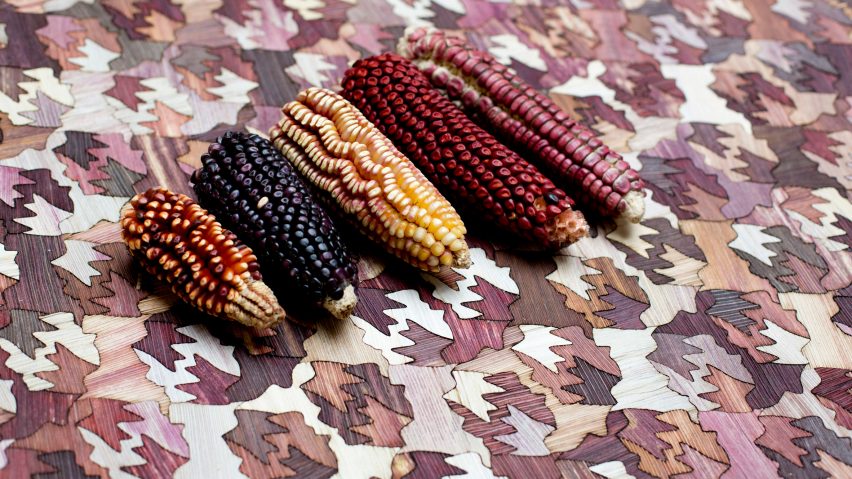
Totomoxtle is a material bringing rare corn back from the brink of extinction
Mexican designer Fernando Laposse has developed Totomoxtle, a marquetry material made from the colourful husks of heirloom corn species that restore vital biodiversity.
Laposse has developed a technique for turning the waste from preparation of the corn as a food stuff into an attractive and versatile veneer, in an example of the circular economy.
The material is currently on display at the V&A museum in London as part of its latest exhibition Food: Bigger than the Plate, which looks at the future of food from compost to plate.
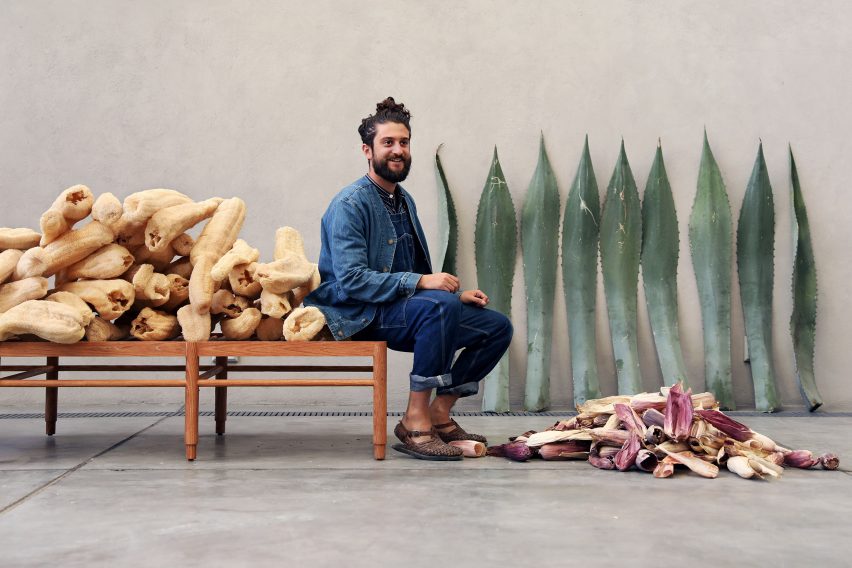
To make the material, corn husks are peeled from the cob, ironed flat and glued onto a backing textile. This is then laser cut into interlocking pieces to be assembled as marquetry.
Totomoxtle veneer can be used for decorative wall covering as well as on furniture and design objects such as tables, lamps, and vases.
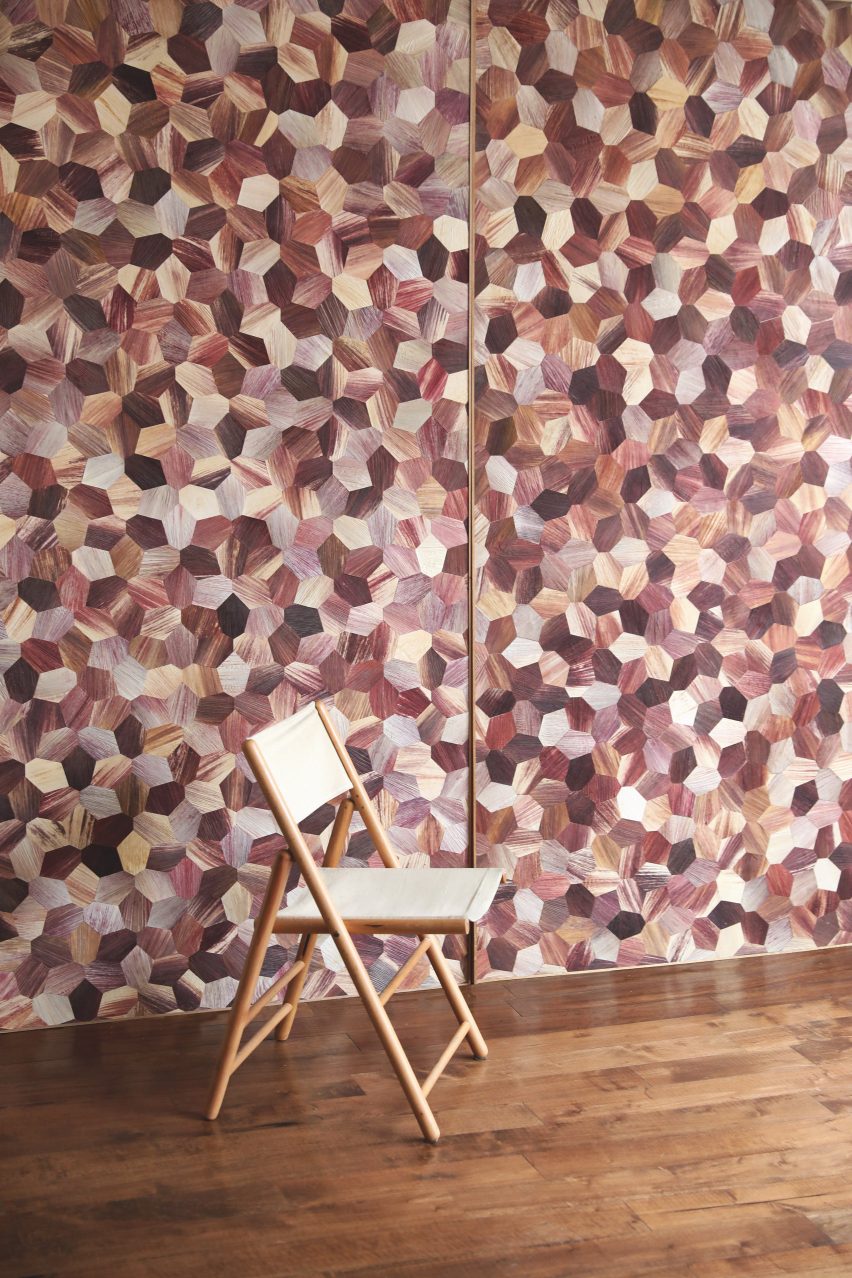
As well as using a renewable, natural material, Totomoxtle has the added benefit of re-popularising an endangered species of maize.
The material's production is also providing employment for Mexico's vulnerable indigenous Mixte people, who are growing the corn used for the veneer in the village of Tonahuixtla, in the south western state of Puebla in Mexico.
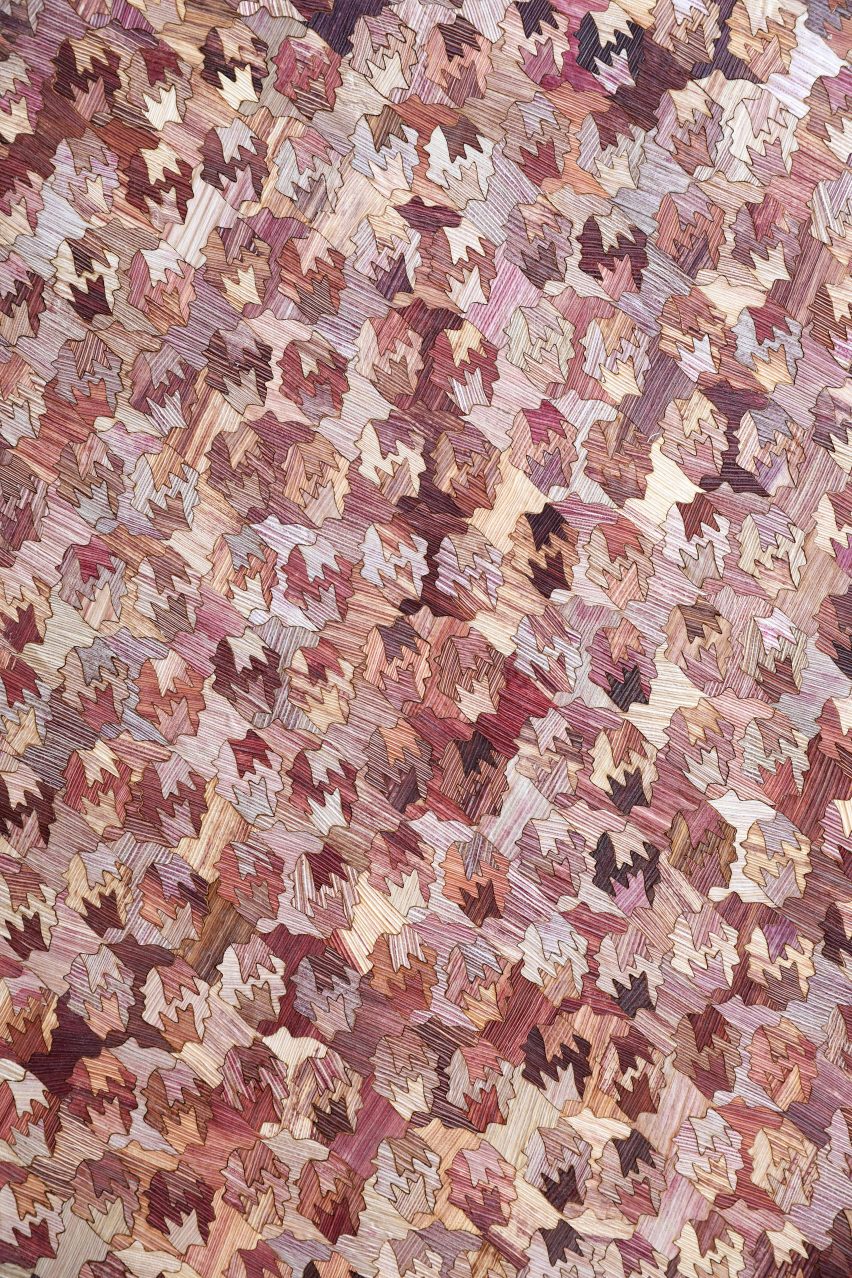
"It's a collaboration between me as a designer, a community of indigenous farmers, and a seed bank that holds the largest collection of corn seeds in the world," Laposse told Dezeen.
"They're providing us seeds from their vaults from 50 years ago that have been almost extinct for the past 25 years. We're now successfully reintroducing species."

The same variations that produce the beautiful combinations of colour in the heirloom corn have also put it at risk under modern farming conditions.
Its lack of consistent colour, size or sugar content makes it unattractive to industrial-scale agriculture, which prizes standardisation.
"Part of the project is raising awareness about how fast we're losing all of this diversity that took thousands of years to make selective breeding, and now it's disappearing within a few decades," said Laposse.
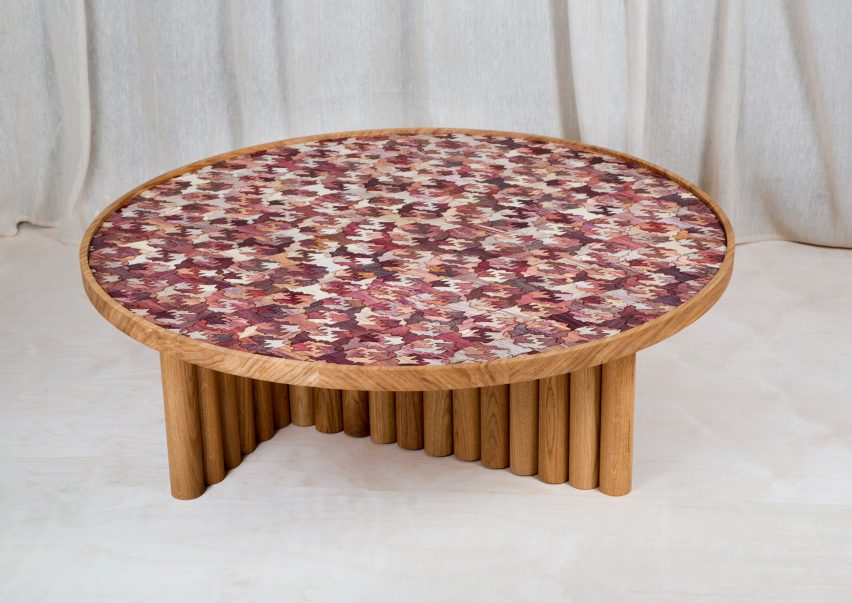
For the Mixte farmers, the introduction of industrial hybrids proved disastrous, as demand for native maize species fell dramatically.
Previously they had farmed the arid mountain according to a polyculture system called milpa, where soil fertility is preserved by planting black beans and pumpkin between the corn.
When the 1994 North American Free Trade Agreement put them in direct competition with farming giants, they adopted modern farming techniques of hybrid species tended to with pesticides and herbicides that disrupted the delicate ecosystem.
This lead to soil erosion and population migration as jobs were lost – something Laposse has been directly addressing with Totomoxtle since starting the project in 2016.
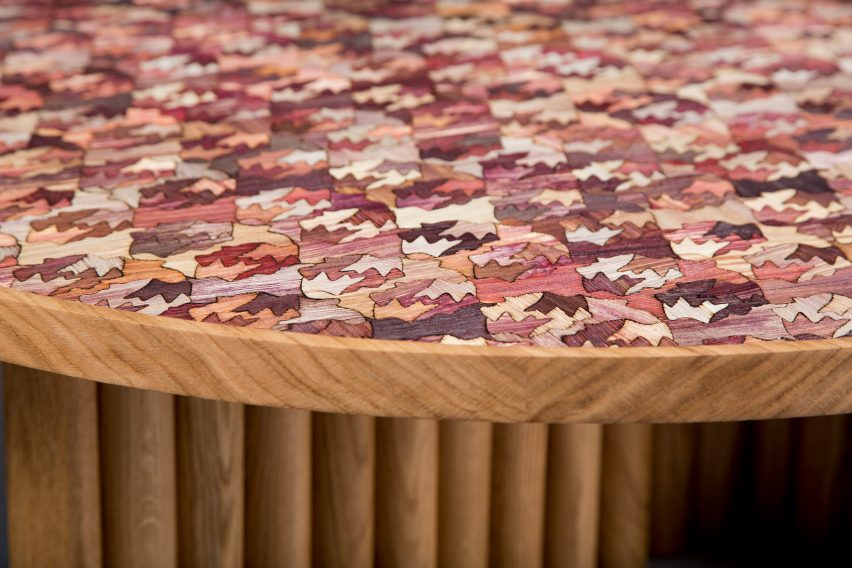
Loss of biodiversity is a pressing global issue. A recent UN report warned that one million plant and animal species are currently at risk of extinction due to human action.
Diverse species help improve food security. If the corn crops that are grown are all one species, the risk is that a single kind of pest or extreme weather caused by climate change could wipe out an entire harvest.
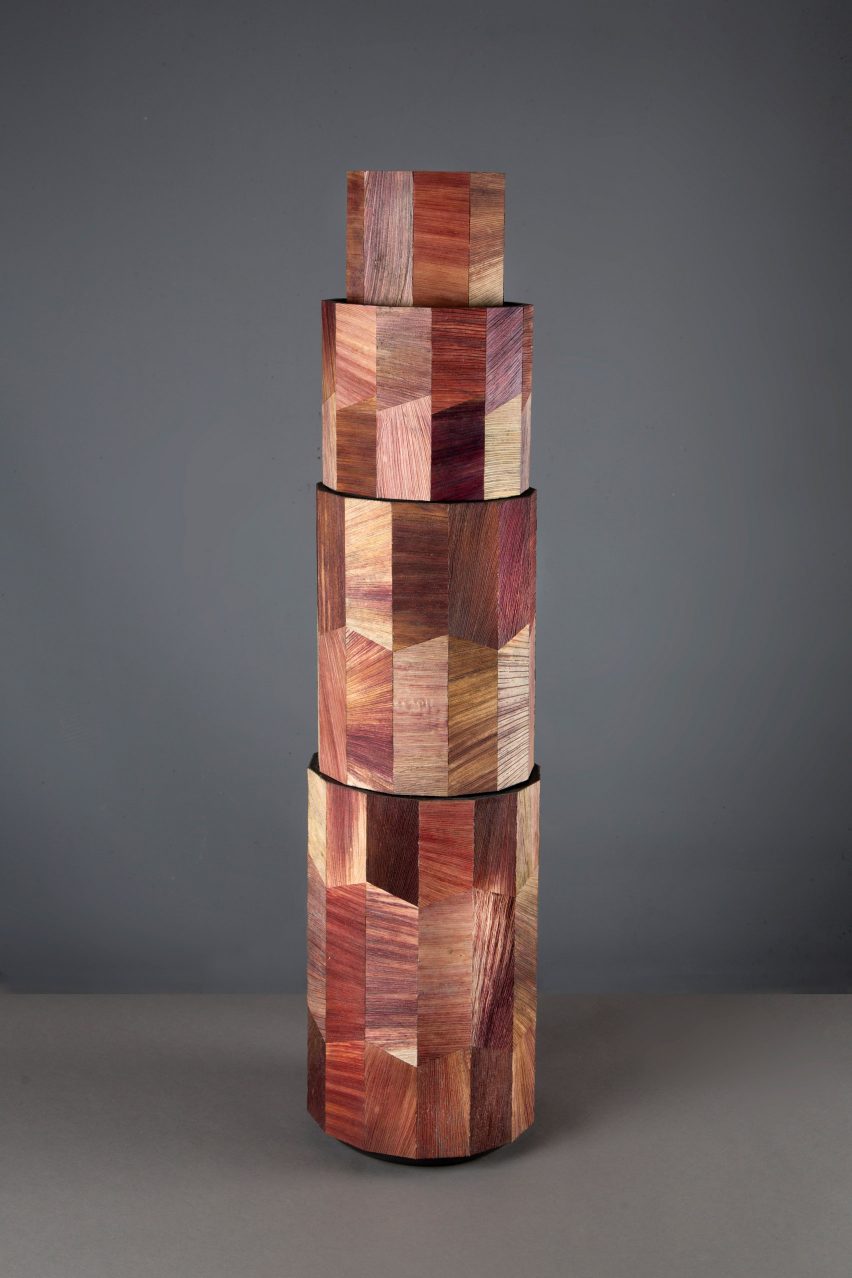
"You lose all your food in one go," said Laposse. "Then there's the gastronomical side of it. For Mexico, it's so important to have this diversity of corn because that is reflected on the recipes, especially indigenous recipes."
"It's example of what design can bring in that sense. Innovating new materials, but also protecting traditions and creating a new craft," he continued.
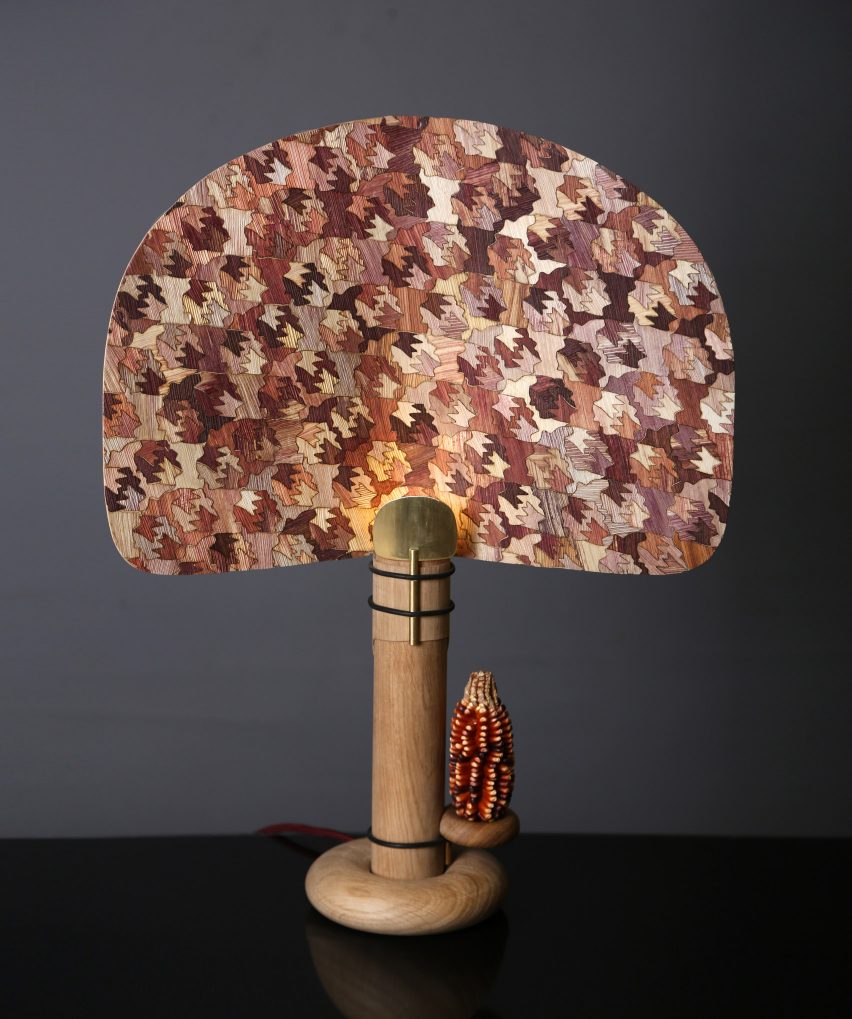
Farming the crops provides employment, particularly for local young mothers who are turning the husks into Totomoxtle. It's a job that's better paid and less demanding than working in the fields, allowing them to earn an income while spending more time with their children.
Laposse's holistic approach is an example of a circular economy, which minimises waste and creates a positively reinforcing loop.
Other examples include sustainable cosmetics packaging made from bacteria by Guatemalan designer Elena Amato, and bioplastic alternatives to single-use paper plates and cups made from discarded lobster shells.